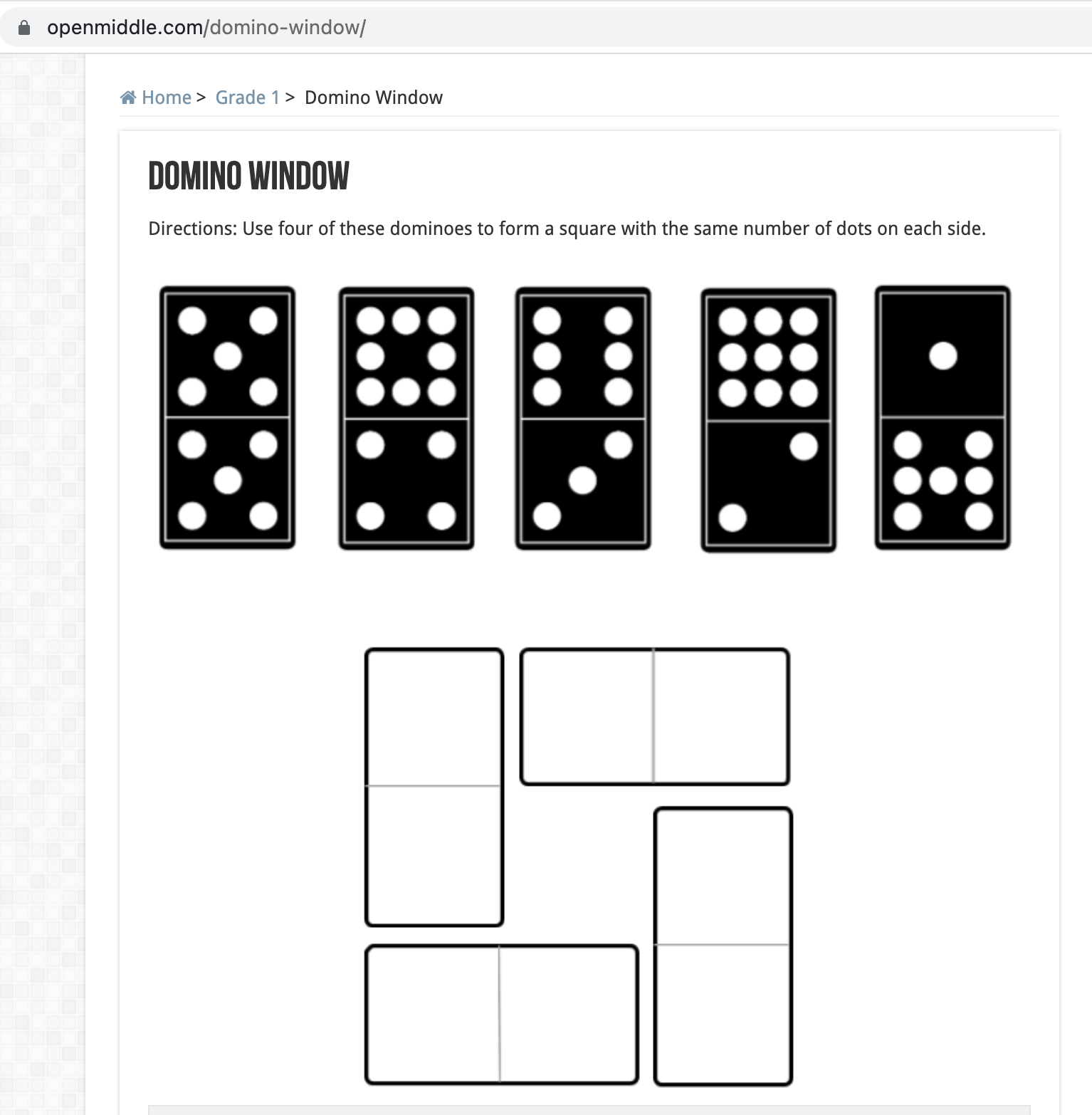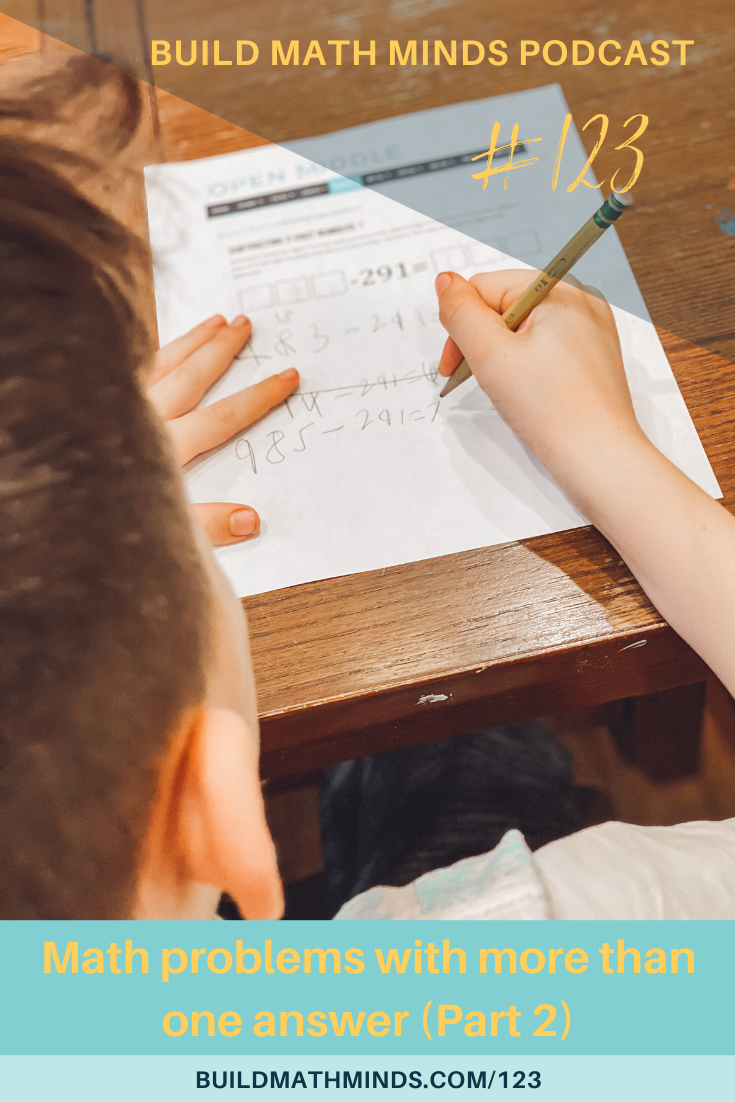Resources mentioned in this episode:
Get problems at OpenMiddle.com
BMM Members log into the membership and then go watch Why We Should Reconsider Using Worksheets (And What We Should Be Doing Instead by Robert Kaplinsky
If you aren’t a member, join the BMM PD site
Welcome fellow Recovering Traditionalists to Episode 123. Today I’d like to talk about Math Problems With More Than One Answer (Part 2).
Back in episode 121 I talked about how one problem, 26 ÷ 6, can have more than one answer depending upon how you write the story problem. But not everyone teaches division with remainders, so how can other grades help their students see that math problems can have more than one answer? I’d like to take a look at another type of problem that shows kids there is more than one answer to a problem: Open Middle Math problems.
I actually talked about the book Open Middle Math on episode 43 and for any of you listeners who are members of the Build Math Minds PD site, the author of Open Middle Math did a Virtual Math Summit session in 2020 titled Why We Should Reconsider Using Worksheets (And What We Should Be Doing Instead) that showed why Open Middle Math is so powerful and how to do it in your classroom.
I’m going to go off track a bit to let you know, in case you haven’t heard, that the 2022 Virtual Math Summit is coming soon! For those of you who are used to attending the summit in August each year, mark your calendars because the summit has changed and is now in February. That’s right, we aren’t doing a summer virtual math summit. I wanted to do the summit during the school year so that educators can take the ideas they learn and start implementing them on Monday. So, the 2022 Virtual Math Summit is taking place February 26th & 27th. It’s all online and it’s free.
Okay, back to my summary of what Open Middle is and where you can get them.
OpenMiddle.com has problems for every grade level, Kindergarten through High School. The tasks allow kids to think strategically on their way to an answer. On their website, they say:
Most of the problems on this site have:
- a “closed beginning” meaning that they all start with the same initial problem.
- a “closed end” meaning that they all end with the same answer.
- an “open middle” meaning that there are multiple ways to approach and ultimately solve the problem.
Sometimes there is just one right answer but lots of problems on the site have more than one answer.
Here’s an example from 3rd grade:

Here’s an example from 1st grade:

Even the problems that do have one right answer often “involve optimization such that it is easy to get an answer but more challenging to get the best or optimal answer.”
Here’s an example of that type of problem:

This problem does have one answer…the closest you can get is 993, but there are still multiple ways to make 993. So even if a kid doesn’t get to 993, they still can get an answer that is close to 1000. Getting an answer is easy but getting the optimal answer is challenging.
As you implement these into your classroom, it isn’t about making sure all your students get that optimal answer. It’s about the conversations that happen when a student shares one answer they got and another student got an answer just a bit closer to 1,000. You get to investigate the difference between what they each did, are there any patterns you can find to help you move closer to the optimal answer?
Open Middle problems are meant to be discussed and investigated as a class. The conversations and the “a-ha’s” kids have while doing them are the powerful part…and of course, as I shared in episode 121, another powerful thing kids get when doing problems with more than one answer is that it helps them see another side of math. Yes, correct answers are an important part of mathematics, but it isn’t the only thing that matters. The journey along the way, the learning they are doing, the kids seeing that even if they didn’t get the best possible answer they still contributed to the class discussion and discoveries….these all make implementing math problems that have more than one answer worth it.
I shared examples from the early grades because a lot of times, we think these types of problems are only for upper grades kids. We believe that only the upper grades kids have the foundational math skills to do thinking type problems like these. I wanted to show you that isn’t true. So no matter what grade level you work with, go check out OpenMiddle.com. I’d love for you to come over to the show notes and leave a comment if you have tried Open Middle and what you’ve seen from your students. As always I’ll link everything up on that show notes page, along with pictures of each of the problems I shared, over at buildmathminds.com/123
Thank you for joining me today and I hope this helped you build your math mind so you can build the math minds of your students.




